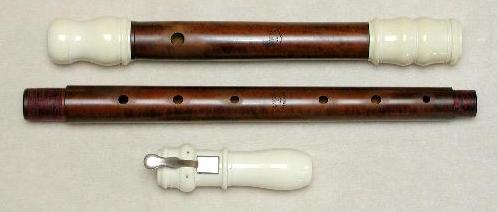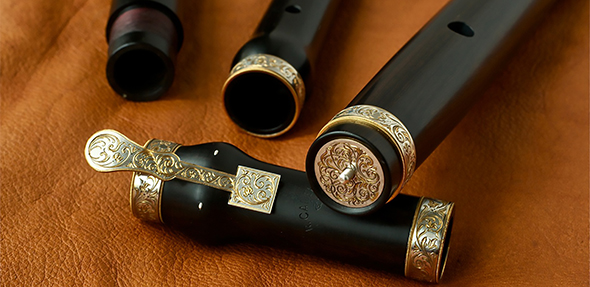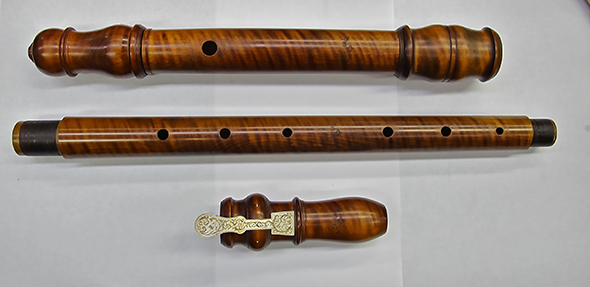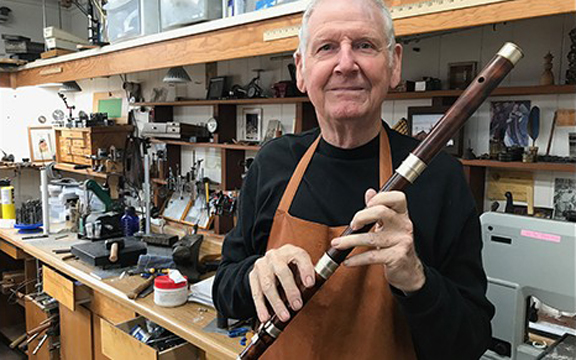Engineer to Master Flute Maker
Rod Cameron shares his Cambridge experience and subsequent professional engineering career which led him overseas to Mexico and Canada, before returning to his first love since childhood; working with his hands to create baroque style flutes.
The privilege of my years here at Cambridge gave me something that is hard to put into words. It has grown more and more important with the passing of the years, so much so, that at the age of 80, I wanted to delay no more in coming back to say ‘thank you’ to an ancient university that remains at the cutting edge in modern times.
I had quite an emotional morning when I re-visited the Department of Engineering. Many memories that had started to get cloudy came back crisp and clear as we ventured into older sections of the labs. We visited the fluid mechanics labs and also the machine shop where I once spent many months. We saw the materials testing of structures labs I knew so well, before finally venturing into the very new and large undergraduate practical hands-on area – the Dyson Centre for Engineering Design. I was so impressed with this new undergraduate training space.
I was also delighted to make a donation towards a fund for student projects and came away with a renewed bond.

A flute made by Roderick Cameron in 1982 after instruments stamped "Hotteterre" made in Paris, circa 1700.
It is boxwood and ivory with a silver key, and plays at a very low pitch of A=392.

The three piece construction of the flute. The parts are the head joint, the center, and the foot joint.
The Start of my Cambridge Journey
My PhD, which I began in 1963, looked into an experimental technique; using magnetic reluctance to measure the very thin oil films that lubricate mechanisms in rolling contact under high load. We knew that lubrication worked, for example, in the ball bearings and curved gear teeth in a private car, but why was the thin oil not squeezed out from the tiny contact areas?
It demanded a heavy commitment to laboratory work, as well as designing, building, and testing apparatus, which is where my passion always lay. I finished successfully and was asked by Professor K L Johnson to stay on full-time in the Department as a Senior Research Assistant focusing on lab apparatus design. Professor Johnson was more than generous when he wrote up the wider aspects of his work on rolling contact work. I got a co-authorship with him in a paper published in the Transactions of the Royal Society.
An Engineer Abroad
In 1969, I went to work in Mexico to equip a new university engineering lab, before later returning to Canada, where I designed some new machines to process, shred and compact solid waste. I also worked with the government to run a team which looked at new ways of applying data coming from NASA’s Landsat satellites which were scanning the earth in a sun-synchronous polar orbit. Landsat data is freely available around the world and has kept up with improvements. It is now on its eighth new satellite.

Blackwood with silver and gold hand engraved rings and key by Rod Cameron.
Becoming a Master Flute Maker
I was on the point of accepting an associate professorship offer at the University of British Columbia, when clarity of mind allowed me to see that my first instinct – to work with my hands – especially with precision mechanisms, was, in fact, my true calling.
I started studying the making of musical instruments, specifically the baroque flute of the 17th and 18th centuries, as used in the repertoire of composers of that era. I developed my own approach from the ground up; built electronic measuring equipment; toured the museums of Europe to study and measure complicated bore profiles; and made my own tooling.
My first flute was sold to Stanford University music department in 1975 and I have not been without an order since. The flute bodies I make from hard woods and the keys are made of silver. They are hand engraved with 24 carat gold on the engraved cuts. Some 2,000 flutes of mine are scattered around the world, the most recent being an order from Prague for a piccolo and a number of flutes ordered by the Opera House, Manaus, Brazil.
I continue to work full-time at my home in California. I choose to have no web page, only phone and email, and I keep my order book full by ‘word of flute’ only.

An earlier flute by Rod Cameron; 17th century style from English boxwood with silver and gold engraving.
Source: Cambridge University Depart of Engineering. Alumni Stories
|

